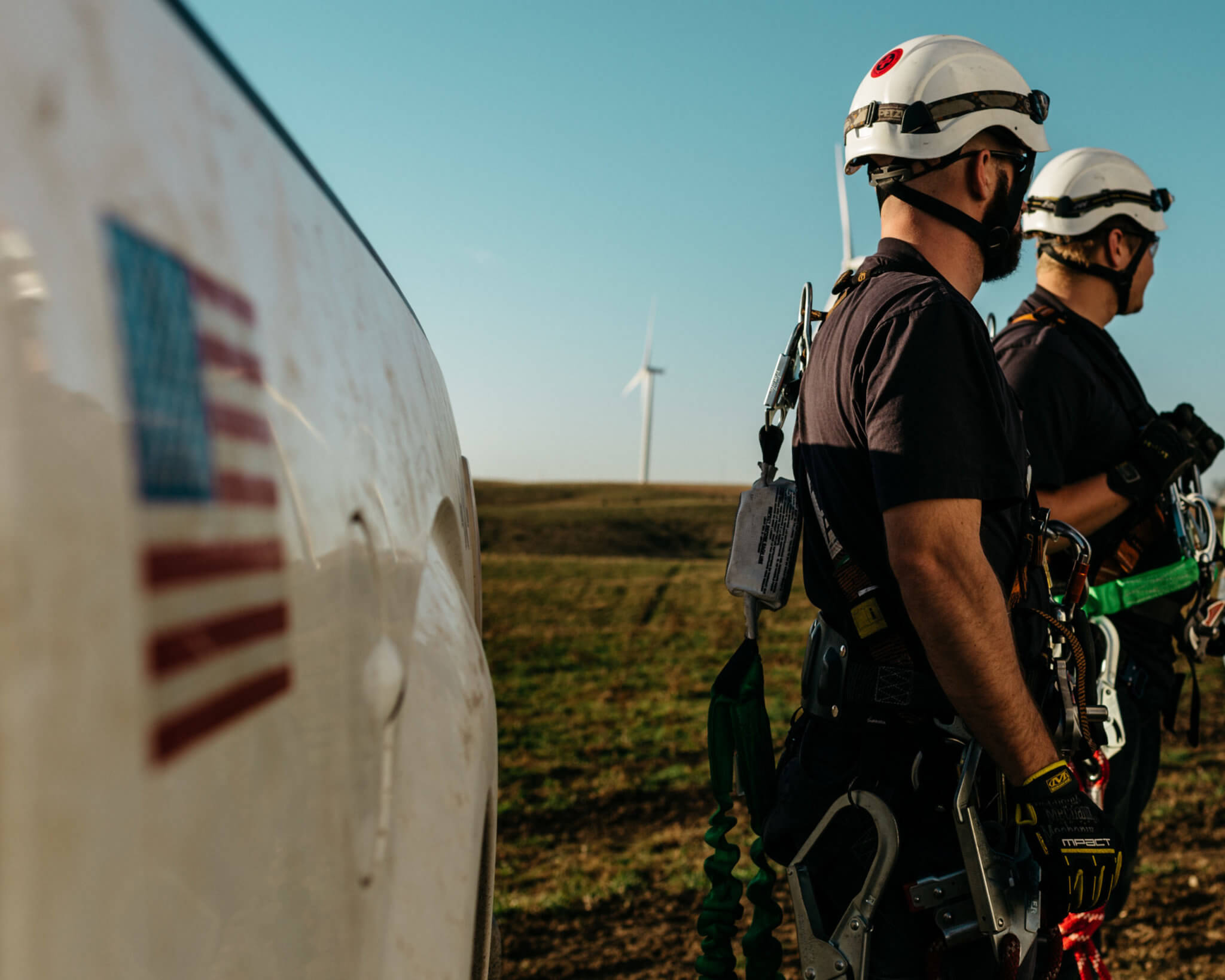October Safety Campaign: Realizing the importance of dynamic stretching
We’re half-way through AWEA’s annual October safety campaign, “Stand Tall.” This year we’re focusing on sprains and strains from working in the nacelle. Soft tissue injuries– sprains and strains– may be sudden (acute) or long-standing (chronic). The symptoms of a sprain or strain may include pain, swelling, stiffness, and reduced efficiency of function.
Dynamic stretching is one of the key elements of this year’s safety campaign and is critical in helping to prevent sprains and strains. The importance of dynamic stretching is covered in the “Stand Tall” webinar, accessible here. The webinar features Adam Simoes, Workplace Services Director, Occupational Therapist, County Physical Therapy, LLC. During the webinar Adam provides an overview of sprains and strains, symptoms, and ways to prevent injury, and he details the benefits of dynamic stretching for you and your team. Adam was also instrumental in the development of the dynamic stretching video provided with the campaign materials.
Let’s get to know Adam a bit and hear some advice:
Why did you start working with the wind industry?
“The opportunity blew into our office. We have a wind farm just 12 miles away from our door and a local college that is at the forefront of training wind power technicians. I flew at the chance to help the wind industry because it’s an industry I would like to see grow. We also have a background in developing ergonomic programs. I have been with County Physical Therapy since 2006. During this time, we have evaluated and developed personalized ergonomics, body mechanics, post-offer assessments, and stretching programs for a multitude of industries. So, we are well known for our ability to help in these areas.”
Why is it important to incorporate a dynamic stretching program?
“In combination with ergonomics, task engineering a dynamic stretching program can be beneficial for several reasons that include reducing fatigue; improving balance, posture, and muscle coordination; and decreasing tightness and resistance in tendons and muscles. The key is a relevant, focused, and functional dynamic program done over a long period of time.”
What advice would you give to someone new to dynamic stretching?
“Give it time. Commit to the process. Track any changes. I was working with a company to develop a pilot dynamic stretching program. We worked with some wind technicians and after about four or five stretches one technician turned to me and said, ‘I don’t know what this is all about or what you just did, but this is the best my back has felt in a while.’ I also met with a group of supervisors from the company to review the pilot program and on supervisor said, ‘Some of my guys are sweating during the stretches, this definitely warms them up.’
Another thing to think about is when to stretch. We recommend stretching in the morning during debriefing meeting, this warms up the body to support the technicians as they load up equipment before leaving for the field. We then suggest stretching when the technician gets to the tower site in preparation for the climb. The reason for this is they have now been driving in a truck and they need to be ready to lift the equipment out of the truck and climb.”
Make sure to download the campaign materials. Resources include an on-demand webinar; PowerPoint presentation; two hard hat stickers; two posters; fitness for work guidelines; tasks in the nacelle video; and dynamic stretching video. While October may be safety month, you can use these materials throughout the year. Stay safe out there—let’s work together to keep everyone healthy!





